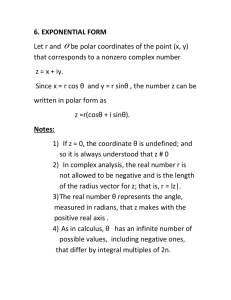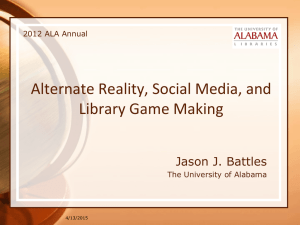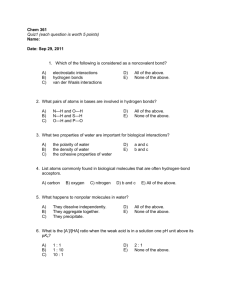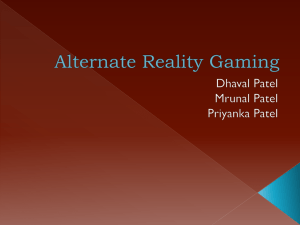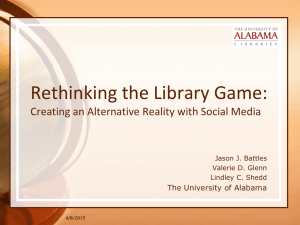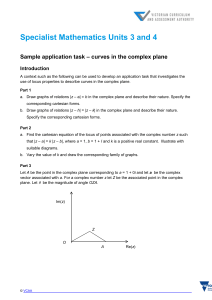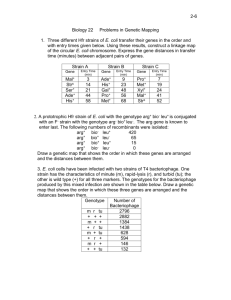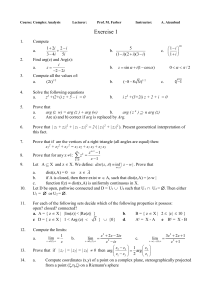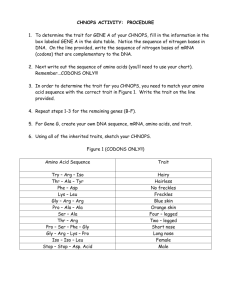Verkleg Erfðafræði
advertisement
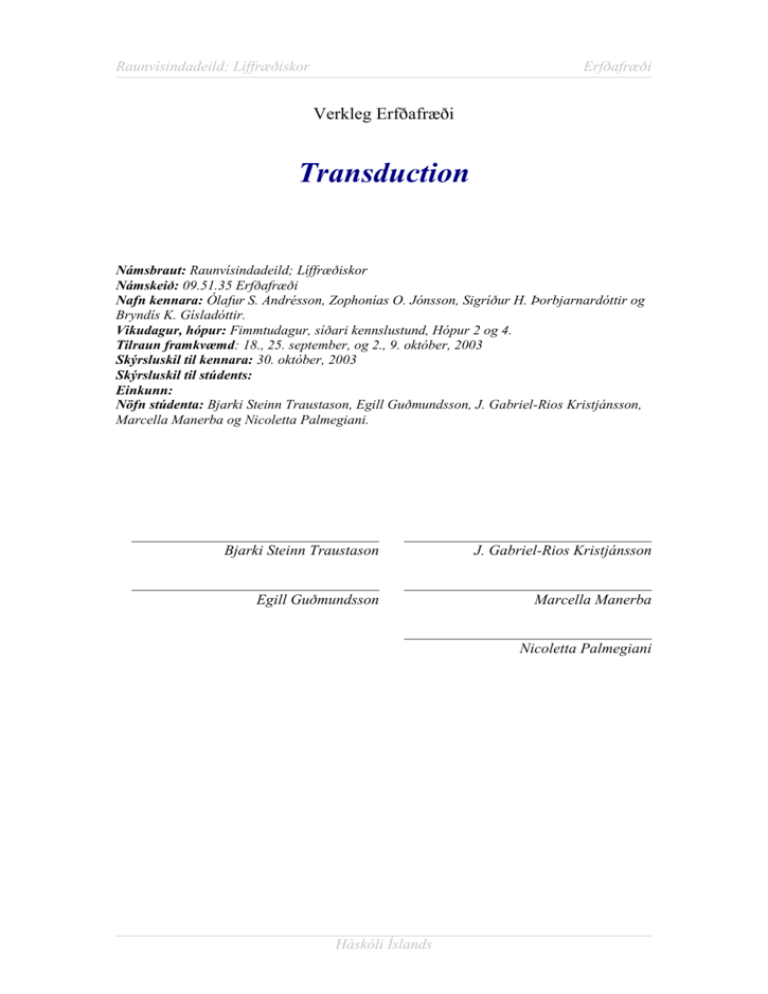
Raunvísindadeild; Líffræðiskor Erfðafræði Verkleg Erfðafræði Transduction Námsbraut: Raunvísindadeild; Líffræðiskor Námskeið: 09.51.35 Erfðafræði Nafn kennara: Ólafur S. Andrésson, Zophonías O. Jónsson, Sigríður H. Þorbjarnardóttir og Bryndís K. Gísladóttir. Vikudagur, hópur: Fimmtudagur, síðari kennslustund, Hópur 2 og 4. Tilraun framkvæmd: 18., 25. september, og 2., 9. október, 2003 Skýrsluskil til kennara: 30. október, 2003 Skýrsluskil til stúdents: Einkunn: Nöfn stúdenta: Bjarki Steinn Traustason, Egill Guðmundsson, J. Gabriel-Rios Kristjánsson, Marcella Manerba og Nicoletta Palmegiani. ________________________________ Bjarki Steinn Traustason ________________________________ J. Gabriel-Rios Kristjánsson ________________________________ Egill Guðmundsson ________________________________ Marcella Manerba ________________________________ Nicoletta Palmegiani Háskóli Íslands Raunvísindadeild; Líffræðiskor 6 Erfðafræði Transduction Introduction: In this process, a bacterial DNA fragment is transferred from one bacterial cell to another by a phage particle containing the bacterial DNA. Such a particle is called a transducing phage. There are two types of transduction, general and specific. In the former type, any part of the bacterial genome can enter the virus particle, but has to be of the same length as viral DNA. The latter type is more specific because only certain can be transferred into the viral particle. During this experiment we used a generalized transducing phage, P1 virus, that produces some particles that contain DNA obtained from the host bacterium, E. coli (CGSC1255), rather than phage DNA; this DNA fragment can be derived from any part of the bacterial chromosome. Following infections, the virus’s DNA, can either inhabit the E. coli cells as a plasmid and replicate, according to the bacterial chromosome, and stay inactive for generation after generation (lysogenic cycle), or it can proliferate and causes bacterial lysis (lysis cycle). During the infection by P1, the phage makes a endonuclease that cuts the bacterial DNA into fragments (~100 kb) and this are occasionally packaged into phages particles instead ‘place’ of P1 DNA. The position of the nuclease cuts in the host chromosome are random, so a transducing particle, may contain a fragment derived from any region of the host DNA. When a transducing particle adsorbs to a bacterium, the bacterial DNA contained in the phage head is injected into the cell and becomes available for recombinations, as a part or as a whole. The probability that a particular gene will be carried in a phage particle can be calculated from the frequency of transducing particles (0.003) and the fraction of the bacterial chromosome contained in such a particle (0.024). This probability is about 6 ∙ 10-5. Generalized transduction allow us to derive linkage information about bacterial gene, when markers are close enough, the phage can pick up and transduce them in a single piece of DNA (cotransduction). Linkage values are initially expressed as a cotransduction frequences, → the greater this frequency is, the closer two genetic markers are. In 1966, T.T. Wu discovered a mathematical expression, in which frequency of transduction, x, and distance of mapping are related to each others: d = L ( 1 – 3√x ) d= distance between two gene [min]. L= length of chromosome carried by phage during transduction. For P1 this length is about 2% of the bacterial chromosome, similar therefore, to 2.1 min. In fact any markers separated by more than 2.1 min will be not cotransduced by P1. There are three main differences between transduction and conjugation. (1) The nature of these processes is different, because, the first occurs between two bacterial cells, while the second occurs between bacterial cell and a virus. (2) Transduction is rare and a random process. Conjugation is specific, and always occurs when there are is an F-factor involved. (3) Conjugation can transfer, from a donor to a recipient cell, almost all of his genome, while only 2 - 2.5% of the genome can be Háskóli Íslands Raunvísindadeild; Líffræðiskor Erfðafræði transferred during transduction. That is the reason why conjugation is used to determine the relative order and distance between genes far from each other in the chromosome. On the other hand, transduction is used to map gene really close to one another. Aims/hypothesis: The aim is to map Tn10-transposable genetic element (transposone) considering argH1 and metB1. Design and Methods: Reference to work sheets in manual booklet, for present exrecise (p.25-28). Exception in the procedure part, p.28, where the sediment was dissolved in 500 µL of buffer, but not 1 mL. Results: TABLE 01, NUMBER OF COLONIES PER PETRI PLATE WITH DIFFERENT TYPES OF MEDIUM: Medium, types: Group: H1 H2 H3 H4* H5 Met– Arg– L-Tet 156 243 183 36 172 182 223 224 28 151 63 143 129 20 95 186 195 108 * These petri plates were incubated with greater dilution, a dilution not known, as a mistake. Given that clarification, these numbers were not taken into count for mean value, so that mean difference between numbers of colonies in different medium deported more clearly. mean TABLE 02, CONTROL PLATES; NUMBER OF COLONIES PER PETRI PLATE WITH DIFFERENT TYPES OF MEDIUM: Medium, types: Strain: 1255 P118500 Met– Arg– L-Tet 0 0 0 0 0 0 mean 0 0 0 TABLE 03, REPLICA PLATING WITH Met+-BACTERIA; NUMBERS OF COLONIES PER PETRI PLATES WITH DIFFERENT TYEPS OF MEDIUM: Group: H1 H2 H3 H4 H5 Σ Met+ TetR Arg+ Met+ TetR Arg– Met+ TetS Arg+ Met+ TetS Arg– 4 0 37 9 2 0 25 23 1 0 33 16 2 0 18 30 2 0 32 16 11 0 145 94 50 50 50 50 50 250 Σ TABLE 03, REPLICA PLATING WITH Arg+-BACTERIA; NUMBERS OF COLONIES PER PETRI PLATES WITH DIFFERENT TYEPS OF MEDIUM: Group: H1 H2 H3 H4 H5 Σ Arg+ TetR Met+ Arg+ TetR Met– Arg+ TetS Met+ Arg+ TetS Met– 1 6 17 26 2 2 26 20 6 2 9 33 2 5 18 25 1 7 18 24 12 22 110 128 50 50 50 50 50 250 Σ Háskóli Íslands Raunvísindadeild; Líffræðiskor Erfðafræði TABLE 04, REPLICA PLATING WITH TetR-BACTERIA; NUMBERS OF COLONIES PER PETRI PLATES WITH DIFFERENT TYEPS OF MEDIUM: Group: H1 H2 H3 H4 H5 Σ TetR Arg+ Met+ TetR Arg+ Met– TetR Arg– Met+ TetR Arg– Met– 2 16 0 32 3 13 3 31 5 18 0 27 4 13 1 32 11 11 0 28 25 71 4 150 50 50 50 50 50 250 Σ TABLE 05, COTRANSDUCTION FREQUENCE ACCORDING TO REPLICA PLATING, IN PERCENTAGE [%]: + Met Arg+ TetR TetR Arg+ Met+ 4.4 13.6 100.0 62.4 100.0 38.4 100.0 48.8 11.6 FORMULA 01, CALCULATIONS FOR COTRANSDUCTION FREQUENCY: General formula: Considering gene a-medium, with gene a, b, involved. (y1/Y) = x x : the ratio, cotransduction frequence y1 : total number of colonies that are a+ b+. Y : total number af all colonies, without considering special medium. Concidering Met–-medium, with the gene Met, and, Tet, involved. ((11 colonies + 0 colonies)/250 colonies) = 0.044 Eg,: TABLE 06, DISTANCE BETWEEN TWO GENES [min]: TetR Arg+ Met+ + Met Arg+ TetR 1.36 0.31 0.00 1.08 0.00 0.57 0.00 0.45 1.02 As the ratio gets larger for two genes, the distance between them becomes more less. The order is TetR, Arg+, Met+. FORMULA 02, CALCULATIONS FOR DISTANCE: General formula: d = L ( 1 – 3√x ) Eg,: x : the ratio, cotransduction frequence L : length of chromosome carried by phage during transduction. Here, for P1, it is 2.1 min. d : distance between the two genes [min]. 2.1 min (1 – (0.044)1/3) = 1.36 min FIGURE 01, THE GENETIC MAP: R Tet ——————————— d1, between TetR and Arg+ (1.08 min + 0.45 min)/2 = 0.76 min = 46 sec Arg+ ——————————— d2, between Arg+ and Met+ (0.31 min + 0.57)/2 = 0.44 min = 26 sec d3, between TetR and Met+ (1.02 min + 1.36 min)/2 = 1.19 min = 1 min 11 sec Háskóli Íslands Met+ Raunvísindadeild; Líffræðiskor Erfðafræði Conclusion/Discussion: According to cotransduction frequency (TABLE 05), the frecuency from Arg+ to Met+ is comparable to frequency from Met+ to Arg+, so cotransduction is successful in both directions. On the other hand, the frequency from TetR to Arg+ or Met+ are not that comparable to the frequency from Arg+ or Met+ to TetR. This difference is accounted to TetR-gene, which is a transposable genetic element, and has no complementary location on chromosome 1255. ■ Háskóli Íslands

